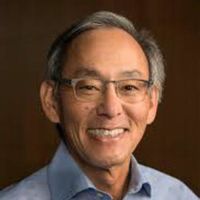
23 - 28 June, 2024
Stanford University
Stanford, California USA
Events
Steven Chu
Stanford University

Biophotonics
The transport of molecular cargos in neuronal cells is analyzed in the context of new developments in statistical physics. Our development of very bright optical probes enabled the long-term single tracking of molecular cargos. Our probes allowed individual molecular steps to be resolved at cellular ATP concentrations (three orders of magnitude higher than the in vitro studies), and led to a new, detailed quantitatively falsifiable chemo-mechanical model where two ATP molecules are hydrolyzed sequentially. A model of how this motor cleverly uses thermal fluctuations to produce move molecular cargos will be discusses. Finally, this motor is shown to operate with an “effective temperature” as high as
, and an intuitive understanding of meaning of
will be given.
About the Speaker
Steven Chu is Professor of Physics, Molecular and Cellular Physiology, and Energy Science and Engineering at Stanford University. He received the 1997 Nobel Prize in Physics for laser cooling and trapping of atoms. Other contributions include the first optical tweezers manipulation of biomolecules, precision atom interferometry based on optical pulses of light, and single molecule FRET of biomolecules tethered to surfaces. He is now developing and applying new methods in molecular biology and medical imaging, materials science, and batteries. Previously he was U.S. Secretary of Energy, where he began ARPA-E, the Energy Innovation Hubs, and was tasked by President Obama to help BP stop the Macondo Oil spill. Previously, he was Director of Lawrence Berkeley National Laboratory and Professor of Physics and Applied Physics at Stanford, and helped initiate Bio-X, which linked the physical and biological sciences with engineering and medicine. Before Stanford, he was a department head at Bell Laboratories. He was past president of the American Association for the Advancement of Science, a Senior Advisor to the Directors of the NIH and the NNSA. He received an A.B. degree in mathematics and a B.S. degree in physics from the University of Rochester, a Ph.D. in physics from the University of California, Berkeley, has 35 honorary degrees, and is a member of the U.S. National Academy of Sciences and 8 foreign academies.
